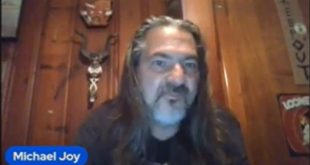Horror movies would not be the same without their thoughtful sound design. But, what makes the soundscape so important? And, what techniques are used in horror films? Let’s take a look.
Source: Pixabay
films? Let’s take a look.
Impact of Sound in Entertainment
The use of sound in entertainment is important as it helps to develop a theme that is believable to the audience. Take something like online casino games, for example. Players can find a variety of themed blackjack games at Paddy Power that use different soundtracks and sound effects to develop immersive thematics that transform the gameplay, even though the rules of blackjack remain fairly consistent. Quantum Blackjack uses an ominous pulsing bass and whooshing noises to create an atmosphere of outer space, whilst All Bets Blackjack has a traditional casino hustle and bustle with coin noises, and Lightning Blackjack features an oldy-worldy wurlitzer style synth to enhance the retro theme.
With this in mind, the soundscape of entertainment is able to make a theme feel more immersive, authentic, and comprehensive when paired with the corresponding visuals and graphics. It is almost no surprise, then, that the use of sound in films can transform the way that audiences perceive the narrative. In other words, comedy films will typically use major keys and perfect harmonies, whilst movies looking to build suspense may use minor keys, contrasting cadences, and jarring transitions. Whilst this may sound unpleasant, this is how horror movies are able to make the experience more believable – and, let’s look at a couple of techniques horror movies use to achieve this.
Unnerving Silence
 Source: Pixabay
Source: Pixabay
As the old adage goes, silence is a scary sound! In a world of sensory saturation, the use of silence is intentional, giving the audience a brief pause from the humdrum. Complete silence is rarely seen in the natural world, which makes the lack of sound feel unnatural to viewers, conjuring an uncomfortable feeling that something bad is going to happen.
In horror flicks, this feeling of unnerving anticipation is particularly capitalised upon. Silence is often followed by a sudden amplification – a technique traditionally used to create an epic jump scare. This ‘scare us with silence’ idea can be seen in No Country For Old Men, Don’t Breathe, and when the main character cannot scream in Get Out, just to name a few instances.
Villainous Motifs
Horror movies are famous for their ominous music scores. Repeated sections of music are known as a musical motif, and are often associated with a certain plot point or character. For this reason, some film score motifs are associated with the characters that appear on screen at the time. When viewers hear this sequence, this immediately makes them think of that specific character.
Horror movies begin by creating a sense of familiarity between the villain and the motif. Once this is achieved, the mere utterance of those familiar notes will create a sense of anticipation that the villain is about to appear, adding to the suspense. Some of the top horror villains, according to Yard Baker, have associated motifs – just look at Candyman, Jigsaw, Ghostface, and Michael Myers.
As you can see, a horror movie’s soundscape is very important for creating an immersive setting, fully fleshing out the characters, and for developing a believable atmosphere of suspense. From silence to character motifs, horror composers utilise many techniques to create an unnerving soundtrack.
 Horror News | HNN Official Site | Horror Movies,Trailers, Reviews
Horror News | HNN Official Site | Horror Movies,Trailers, Reviews






